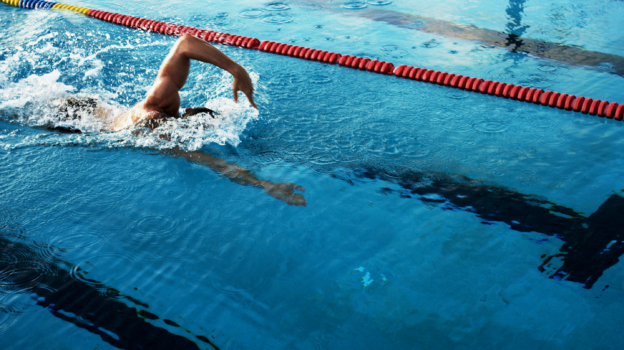Freestyle Technique
The Six Phases of the Pulling Cycle
The following article is an excerpt from the soon-to-be-released book, entitled Fundamentals of Fast Swimming, by Gary Hall Sr and Devin Murphy.
Every aspect or phase of the underwater pulling motion and the arm recovery in swimming freestyle is important. To help understand the contribution of each part of the pulling motion and the recovering arm to a swimmer’s speed, we have broken down a single pulling cycle into 6 phases, beginning with the hand entry into the water and ending with the following entry of the same hand.
I. Lift Phase
II. Propulsion Phase
A. Front Quadrant
B. Back Quadrant
III. Release Phase
IV. Arm Recovery Phase
A. Early (upward trajectory)
B. Late (downward trajectory)
The lift phase refers to the predominant forces that occur early in the underwater pulling motion, while the hand is still moving forward and downward in the water. Lift forces elevate a swimmer’s body higher in the water which have the benefit of reducing a swimmer’s frontal drag.
The propulsion phase of the pull begins once the hand starts moving backward relative to the still water it is moving through. The propulsion phase continues until the arm runs out of length and the hand can no longer move backwards in the water, or the hand simply stops pressing backward.
The release phase refers to the very brief time after the hand completes its propulsion and the arm and hand begin to move forward again. They should slide forward out of the water with the least amount of frontal drag possible to begin the recovery phase.
The technique and speed of arm recovery over the water determines the amount of work required in this process of getting ready for another pull. It also determines the amount of kinetic energy at the end of the recovery that couples with the other pulling hand and the kick. The speed of the downward trajectory of the arm, along with the shoulder and hip rotational speeds, significantly impact the propulsion and speed of the swimmer.
We will take a journey from hand entry to hand entry, completing a freestyle technique pulling cycle. During this journey, we will explain the importance of each phase of the freestyle pulling cycle and how they differ, depending on the freestyle technique being utilized.
Yours in Swimming,
Gary Sr.


I am looking forward to reading this book. The writing in the except seems tight, logical, and practical. As a youth swimmer, years ago, I poured over “The Science of Swimming” by Doc Counsilman. History is interesting here since it appears that one of Docs greatest swimmers will be publishing another great reference for a whole new generation of swimmers.
Can’t wait to read the book.
Tim Delehanty